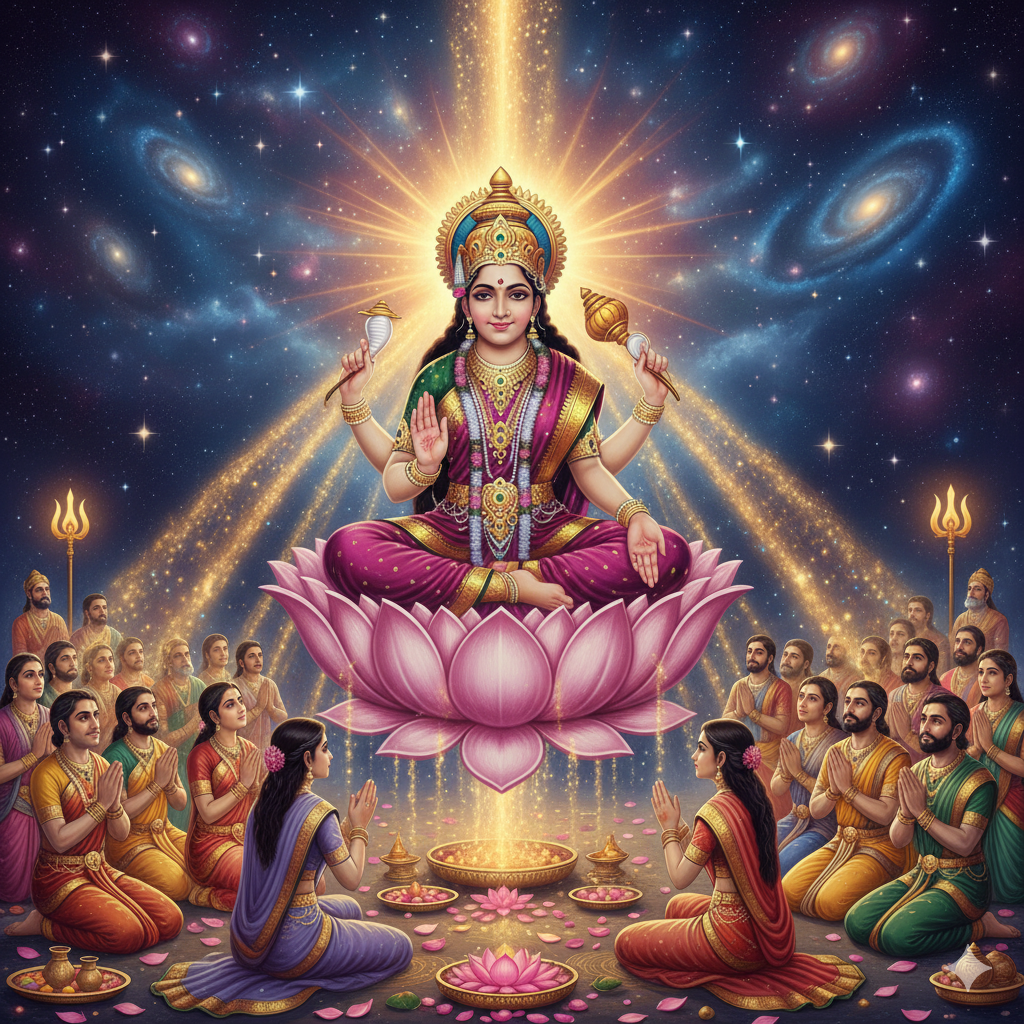
Introduction
Maa Siddhidatri – Day 9 The ninth and final day of Navratri is dedicated to Maa Siddhidatri, the ninth form of Goddess Durga. Her name is a combination of two Sanskrit words – Siddhi (spiritual powers, accomplishments) and Datri (giver). Thus, Maa Siddhidatri is the Goddess who bestows siddhis (divine powers) and blessings upon her devotees.
According to scriptures, she grants eight siddhis (Ashta Siddhi) and many other supernatural abilities. Even Lord Shiva is believed to have worshipped her, receiving these siddhis and becoming Ardhanarishvara (half Shiva, half Shakti).
On this day, devotees conclude their Navratri fasts, perform Maha Aarti, and celebrate with devotion and gratitude.
The Story of Maa Siddhidatri – Day 9
According to the Devi Purana, when the universe was newly created, Lord Shiva worshipped Maa Siddhidatri to receive blessings of ultimate power. The Goddess granted him eight siddhis and many other mystical powers, helping him fulfill his cosmic duties.
Pleased with her blessings, Shiva attained the form of Ardhanarishvara, symbolizing that the divine feminine (Shakti) is inseparable from the masculine (Shiva).
Maa Siddhidatri thus represents the culmination of Navadurga – the ultimate form of Goddess Durga who grants every boon, blessing, and liberation to her devotees.
Appearance and Symbolism
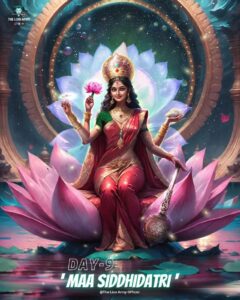
- Complexion: Radiant, divine glow.
- Clothes: She is adorned in red attire (symbol of energy and victory).
- Mount (Vahana): Lion or Lotus.
- Arms: She has four arms – holding a chakra (disc), conch, mace, and lotus.
- Aura: Serene, powerful, and divine.
Her appearance symbolizes completeness, perfection, and supreme divine energy.
Mantra of Maa Siddhidatri – Day 9
Om Devi Siddhidatryai Namah॥
Chanting this mantra helps devotees gain spiritual power, divine blessings, and liberation from worldly sufferings.
Puja Vidhi (Worship Method of Maa Siddhidatri)
Step-by-Step Rituals for Day 9:
- Morning Preparation: Take a holy bath and wear purple or peacock-green clothes (the Day 9 colors).
- Kalash & Idol Setup: Decorate the altar with flowers and place the idol of Maa Siddhidatri.
- Offerings (Bhog): Fruits, coconut, sweets (especially halwa and poori), and sesame seeds.
- Flowers: Lotus, marigold, or red roses.
- Lamp & Incense: Light a ghee lamp and incense sticks.
- Chanting & Aarti: Recite Durga Saptashati or Devi Mahatmyam. Perform aarti with conch blowing.
- Maha Navami Rituals: Many devotees also perform Havan (fire ritual) and offer food to Brahmins and young girls (Kanya Puja).
Day 9 Navratri Color Guide
The color for Day 9 is purple (or peacock green).
- Purple: Symbolizes ambition, spirituality, and energy.
- Green: Represents renewal, peace, and harmony.
Wearing these colors while worshipping Maa Siddhidatri enhances her divine blessings.
Spiritual Significance of Maa Siddhidatri Worship
- Grantor of Siddhis: She bestows Ashta Siddhi and other supernatural powers.
- Spiritual Liberation: Her worship leads to moksha (salvation).
- Unity of Shiva and Shakti: She symbolizes completeness and the merging of masculine and feminine energies.
- Bringer of Fulfillment: Devotees seek her blessings for success, prosperity, and peace.
- End of Navratri: Her worship marks the spiritual culmination of Navratri.
Ashta Siddhis Granted by Maa Siddhidatri
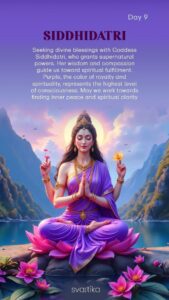
The eight siddhis she grants include:
- Anima: Ability to become very small.
- Mahima: Ability to expand infinitely.
- Garima: Ability to become infinitely heavy.
- Laghima: Ability to become weightless.
- Prapti: Ability to obtain anything desired.
- Prakamya: Ability to fulfill any desire.
- Ishitva: Lordship over creation.
- Vashitva: Power to control all beings.
Offerings to Maa Siddhidatri – Day 9
- Bhog: Coconut, sesame sweets, halwa, and fruits.
- Flowers: Lotus and roses.
- Clothes: Purple, green, or red clothes are offered.
- Donation: Feeding the poor, donating clothes, and worshipping young girls is highly auspicious.
Astrological Importance
Maa Siddhidatri governs Ketu (south lunar node). Worshipping her removes Ketu-related problems, strengthens intuition, and gives clarity in spiritual paths.
Maa Siddhidatri – Day 9 Significance
The ninth day, also known as Maha Navami, holds great importance in Navratri. Devotees believe that Maa Siddhidatri fulfills all wishes, grants powers, and blesses them with peace and prosperity.
It also marks the culmination of Navratri rituals, leading to Vijaya Dashami (Dussehra), the victory of good over evil.
Conclusion : Maa Siddhidatri – Day 9
Maa Siddhidatri, the final form of Navadurga, is the embodiment of divine completeness. She represents the unity of Shiva and Shakti and blesses her devotees with siddhis, spiritual knowledge, and liberation.
Her worship on Day 9 of Navratri brings fulfillment, peace, and ultimate blessings.
20 FAQs about Maa Siddhidatri
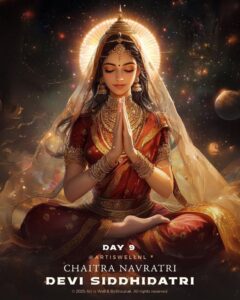
Q1. Who is Maa Siddhidatri?
A1. She is the ninth form of Goddess Durga, who grants siddhis (spiritual powers).
Q2. What does the name Siddhidatri mean?
A2. It means the Goddess who gives siddhis (divine accomplishments).
Q3. What is her vehicle (vahana)?
A3. She rides a lion or sits on a lotus.
Q4. What does she hold in her hands?
A4. Chakra, conch, mace, and lotus.
Q5. Which planet does she govern?
A5. She governs Ketu.
Q6. What color is worn on Day 9?
A6. Purple or peacock green.
Q7. What is the mantra of Maa Siddhidatri?
A7. “Om Devi Siddhidatryai Namah॥”
Q8. What is the significance of Day 9 in Navratri?
A8. It marks the worship of the final form of Durga and the culmination of Navratri.
Q9. What are Ashta Siddhis?
A9. Eight supernatural powers granted by Maa Siddhidatri.
Q10. Who received siddhis from her?
A10. Lord Shiva received siddhis and became Ardhanarishvara.
Q11. What food is offered to Maa Siddhidatri?
A11. Coconut, sweets, halwa, and sesame foods.
Q12. What flower is offered to her?
A12. Lotus and roses.
Q13. Does she grant moksha?
A13. Yes, she helps devotees attain liberation.
Q14. What is the benefit of her worship?
A14. Peace, prosperity, siddhis, and spiritual growth.
Q15. What ritual is performed on Day 9?
A15. Maha Navami rituals, havan, and kanya puja.
Q16. Why is she connected with Ketu?
A16. She removes Ketu-related planetary obstacles.
Q17. What lesson does she teach?
A17. That completeness and divine unity bring fulfillment.
Q18. Is Kanya Puja done on Day 9?
A18. Yes, worshipping young girls is very auspicious.
Q19. What does purple symbolize on Day 9?
A19. Spirituality, ambition, and divine energy.
Q20. What is the ultimate blessing of Maa Siddhidatri?
A20. Liberation from material bondage and attainment of divine bliss.
Summary of All 9 Navadurga
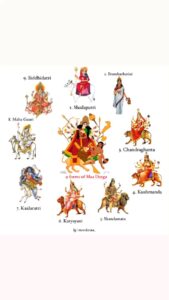
- Maa Shailputri – The daughter of the mountains (symbol of devotion).
- Maa Brahmacharini – Goddess of penance and tapasya.
- Maa Chandraghanta – Bravery and beauty are the attributes of this goddess.
- Maa Kushmanda – Creator of the universe.
- Maa Skandmata – Mother of Kartikeya, symbol of motherhood.
- Maa Katyayani – Fierce warrior goddess.
- Maa Kalaratri – Destroyer of fear and evil.
- Maa Mahagauri – Goddess of purity and forgiveness.
- Maa Siddhidatri – Giver of siddhis and ultimate blessings.
Together, the Navadurga represent the complete journey of spiritual awakening – from devotion and discipline to courage, destruction of evil, purity, and finally divine completeness.
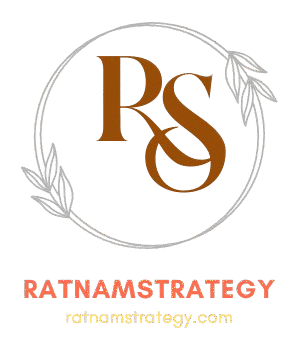
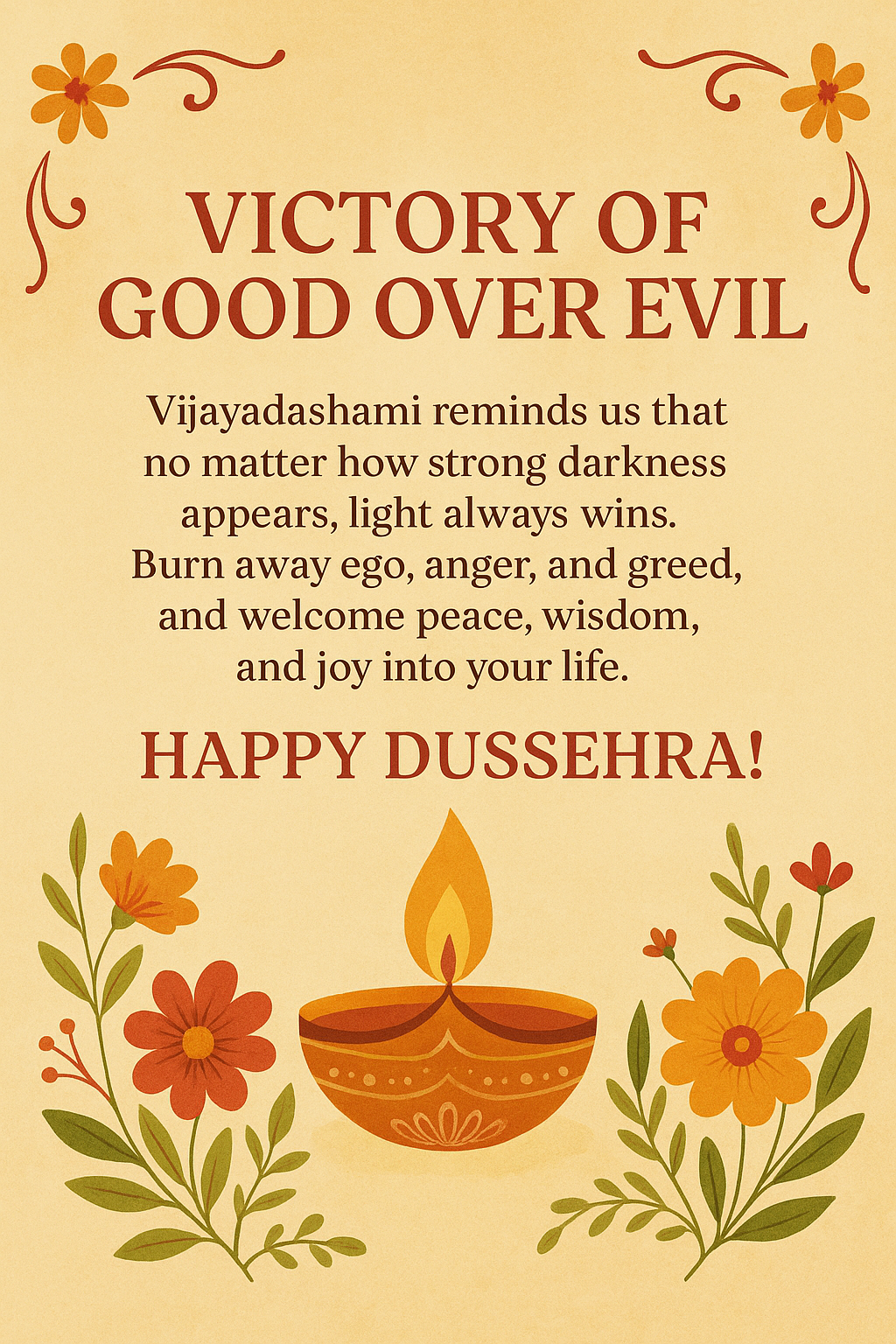
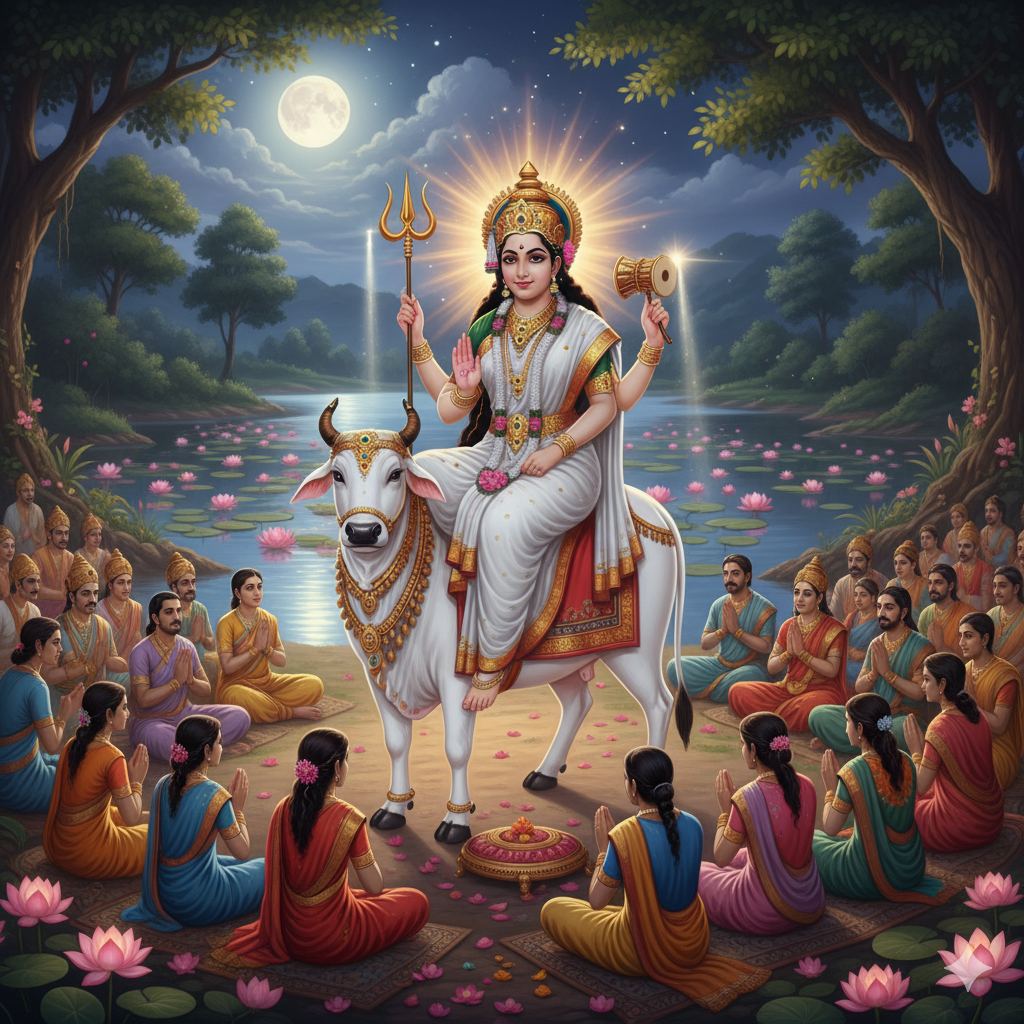
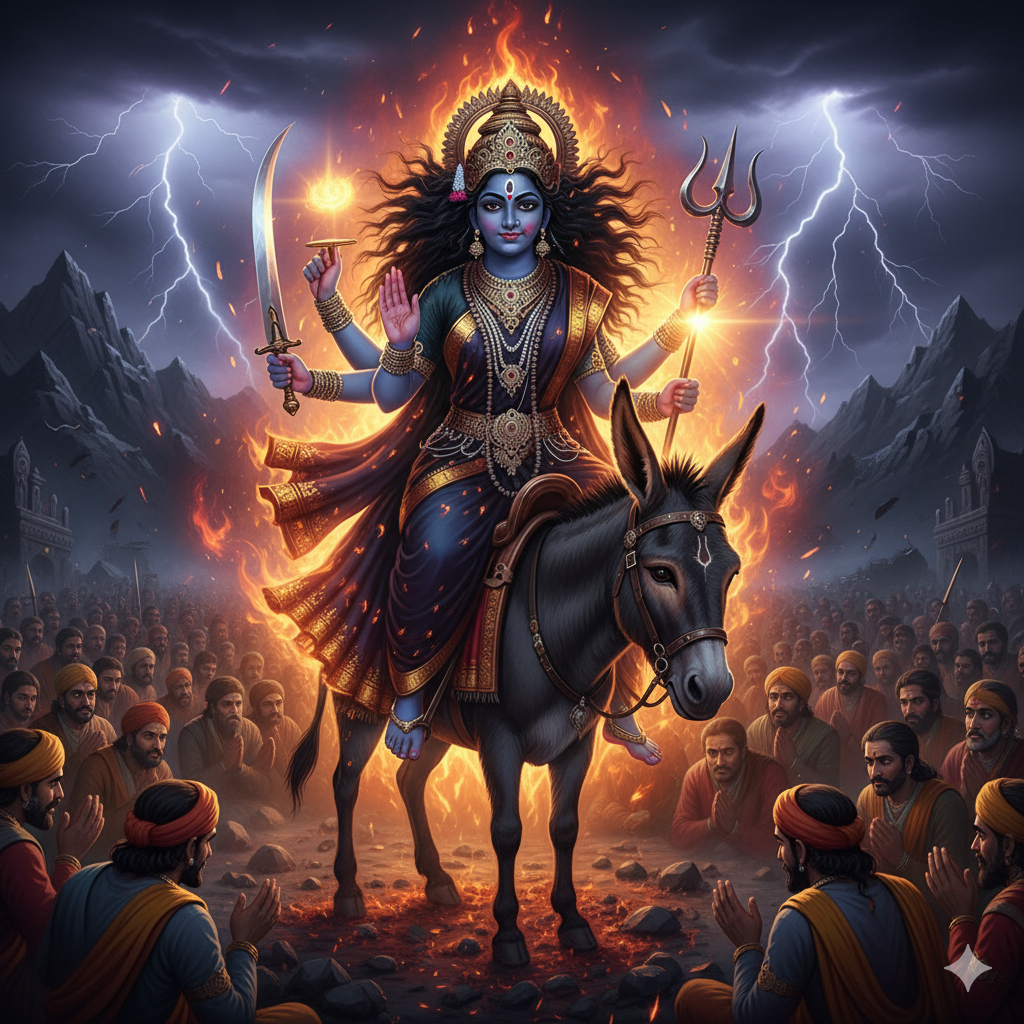
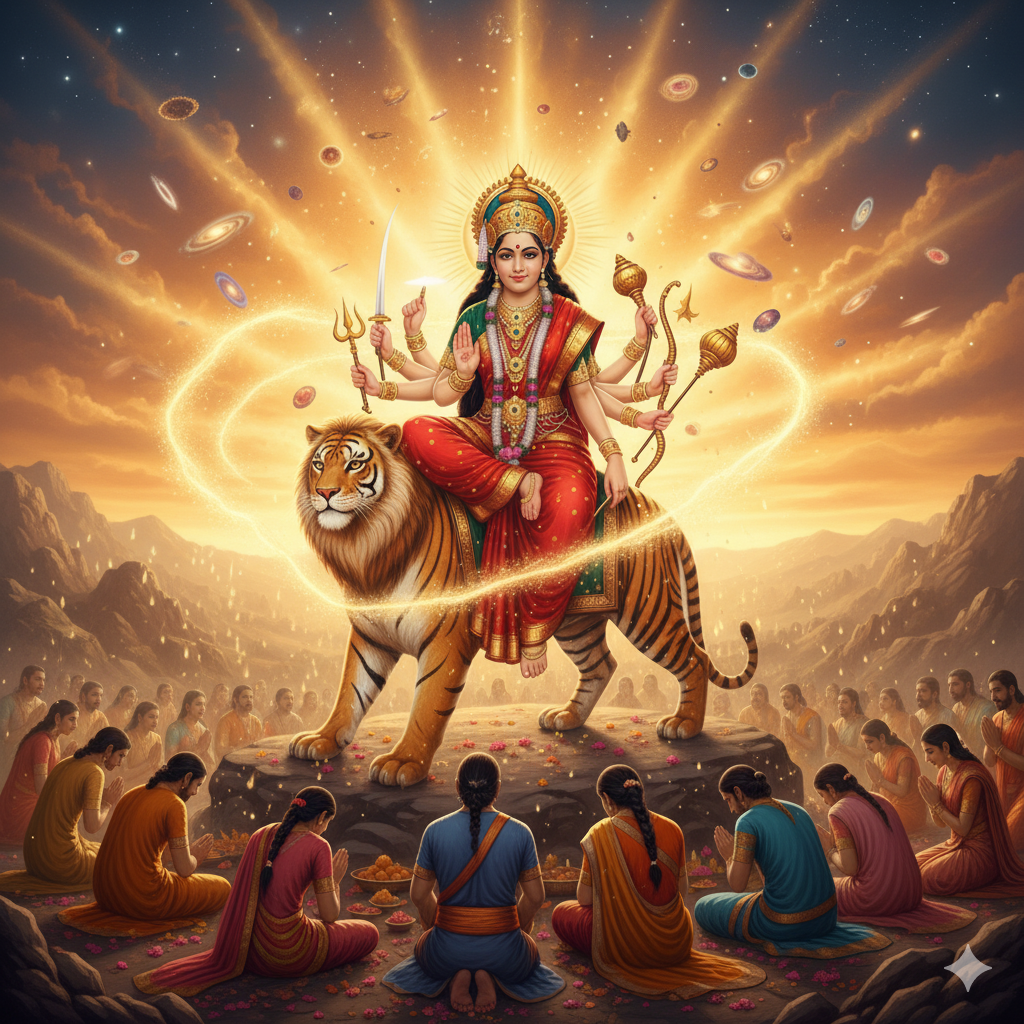
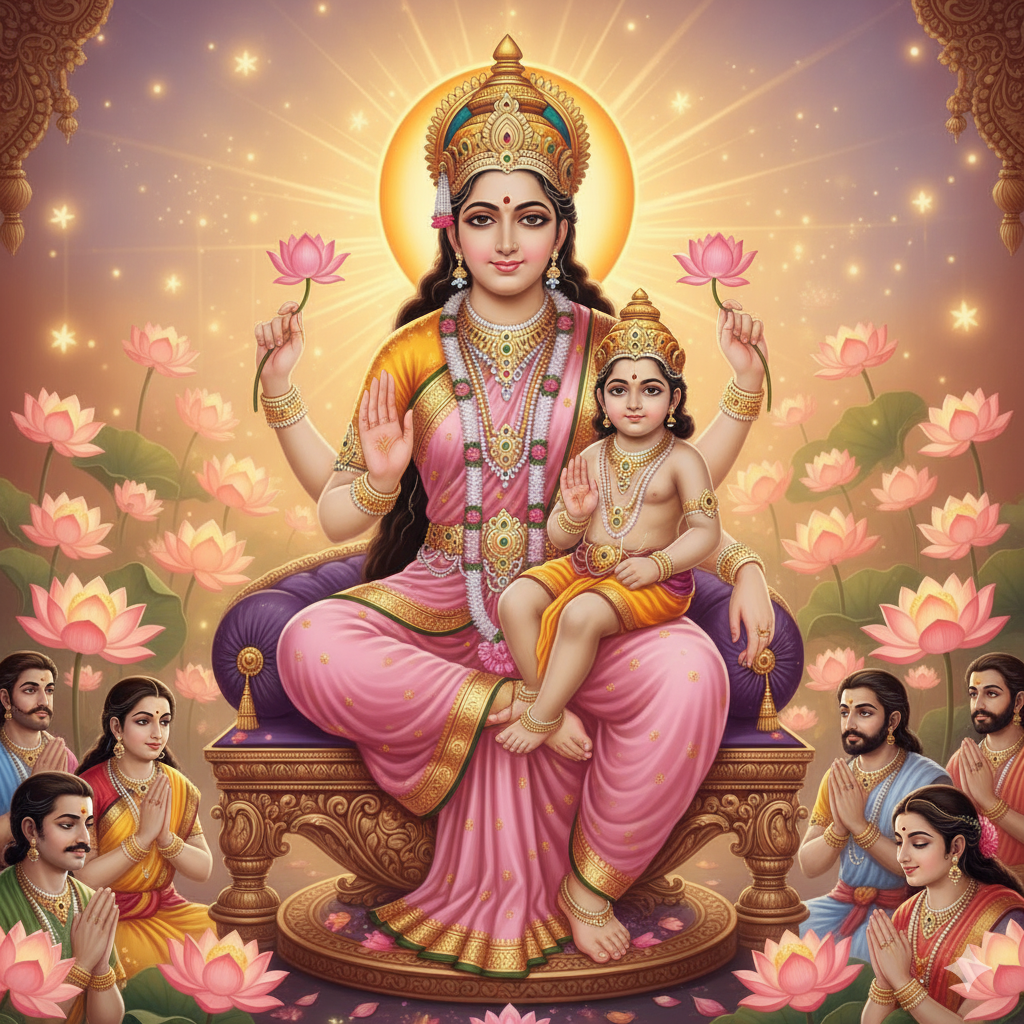
thank you